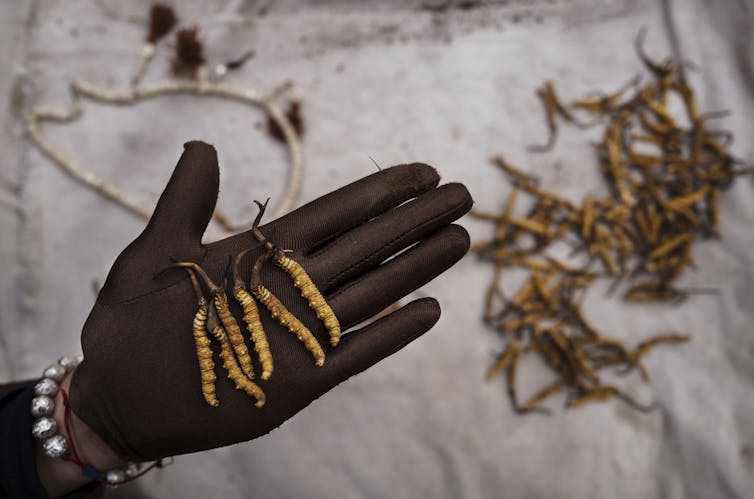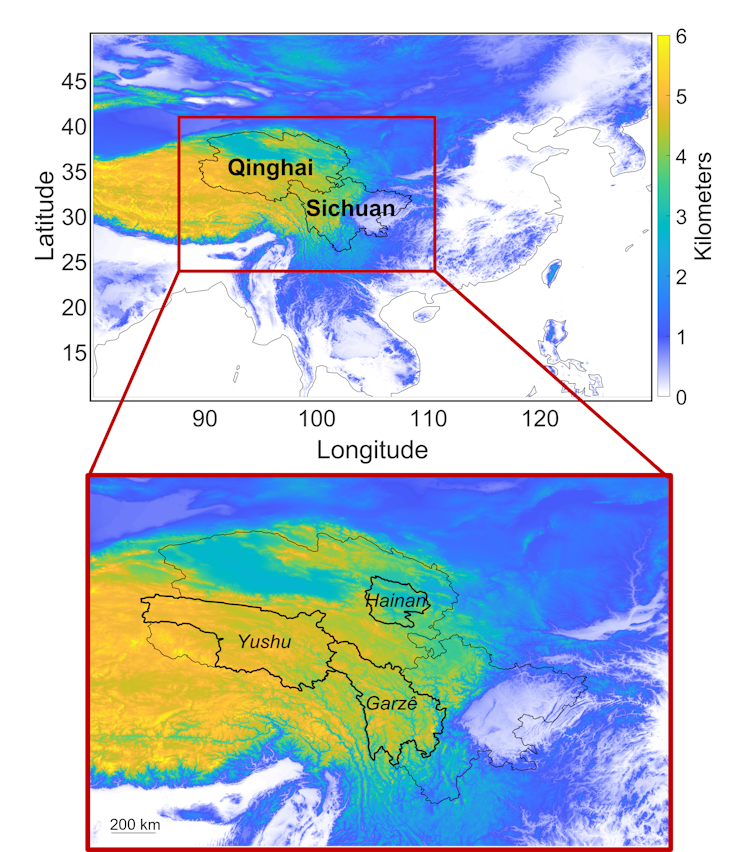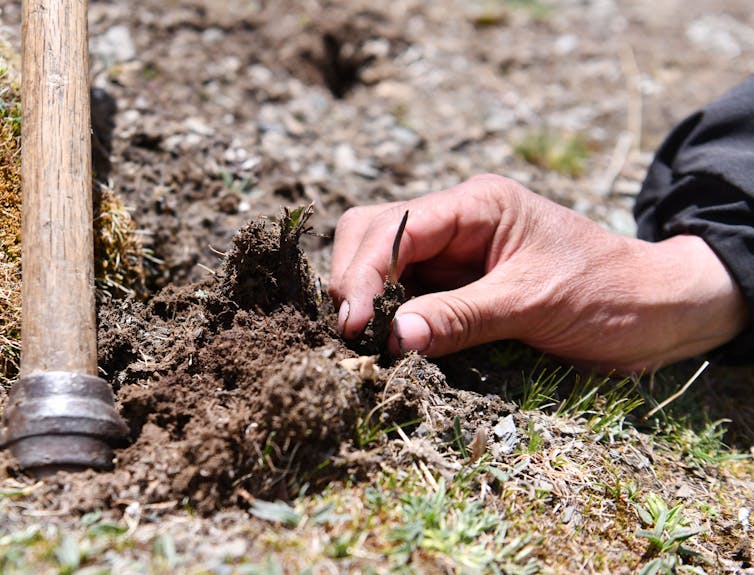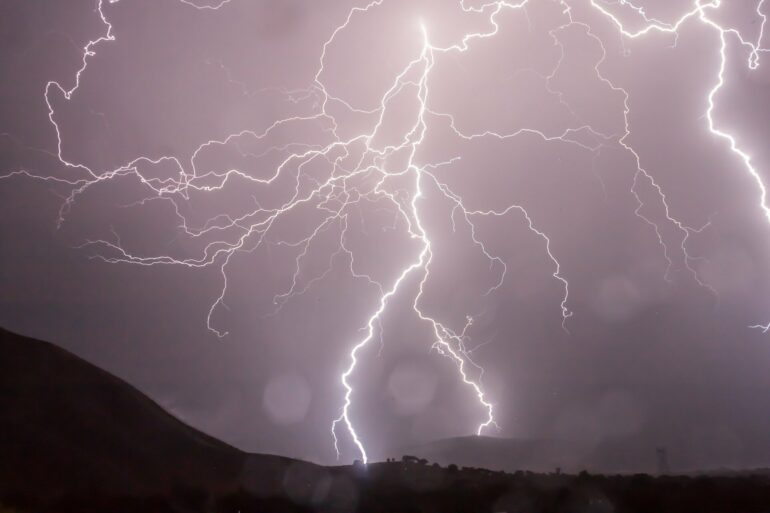In the remote Qinghai-Tibetan Plateau, a rare fungus grows inside dead caterpillars. In traditional Chinese medicine, this parasitic fungus is prized for its purported medicinal effects. Known as Ophiocordyceps sinensis – colloquially, caterpillar fungus or “Himalayan gold” – it can fetch astronomical prices on the herbal medicine market: up to US$63,000 per pound.
Ophiocordyceps sinensis fungus is a parasite that targets the caterpillar that is the larva of the ghost moth. The process begins in late summer to early fall, when fungal spores infect the caterpillars. Over time, fungal filaments called mycelia slowly spread out and consume the caterpillars from within, turning them into hardened, mummified shells by winter. When spring arrives, the fungus enters its final stage: A grasslike fruiting body sprouts from the preserved caterpillar’s head and pushes up through the soil.

A woman displays the fungus for sale at a market. The fungus sprouts from the caterpillar’s head.
Kevin Frayer/Getty Images News via Getty Images
While many traditional Chinese/herbal medicine consumers are drawn to the fungus for its supposed health benefits, my interest lies in a darker side of its harvest: the deadly relationship between caterpillar fungus collection and lightning strikes. As a meteorologist, I study lightning and its impacts around the world. A few factors come together to make the situation on the Qinghai-Tibetan Plateau so dangerous.

Boundary and topography (elevation depicted by color) of Qinghai and Sichuan provinces (top), including the Yushu, Hainan and Garzˆe Tibetan autonomous prefectures (bottom) of the Qinghai–Tibetan Plateau, where most lightning-strike deaths and injuries occurred.
2024 American Meteorological Society (AMS). From Zhang and Holle in Weather, Climate, and Society.
A deadly harvest
People hunt for this fungus during late spring and summer, exactly when lightning strikes are most common in these mountains. Villagers often spend weeks scouring the rugged mountains for this precious resource, sometimes up to 16,400 feet (5 kilometers) above sea level. That’s an altitude of more than 3 miles.

A collector plucks a caterpillar from the ground. The parasitic fungus has sprouted from the caterpillar’s head.
Jigme Dorje/Xinhua News Agency via Getty Images
At these heights, the weather can change in an instant, and there’s nowhere safe to hide from storms. While this area doesn’t get as many lightning strikes as some parts of Asia, it’s still dangerous enough to be a serious threat during these crucial harvesting months.
Tragically, caterpillar fungus hunting has led to at least 31 lightning-related deaths and another 58 lightning-related injuries in the past decade, according to the yearbooks of Chinese meteorological hazards (中国气象灾害年鉴) and government websites,…



